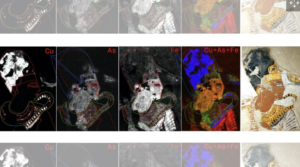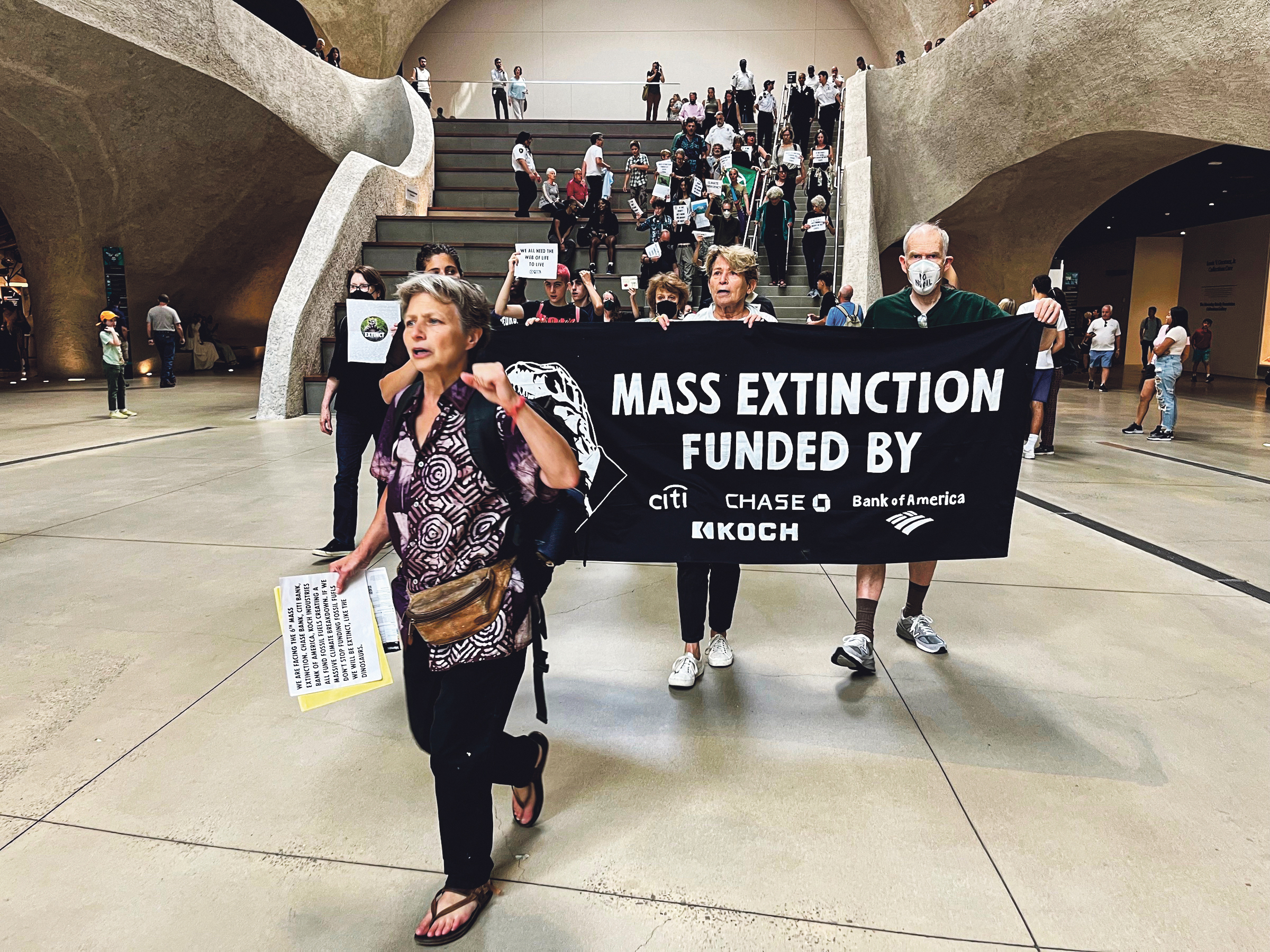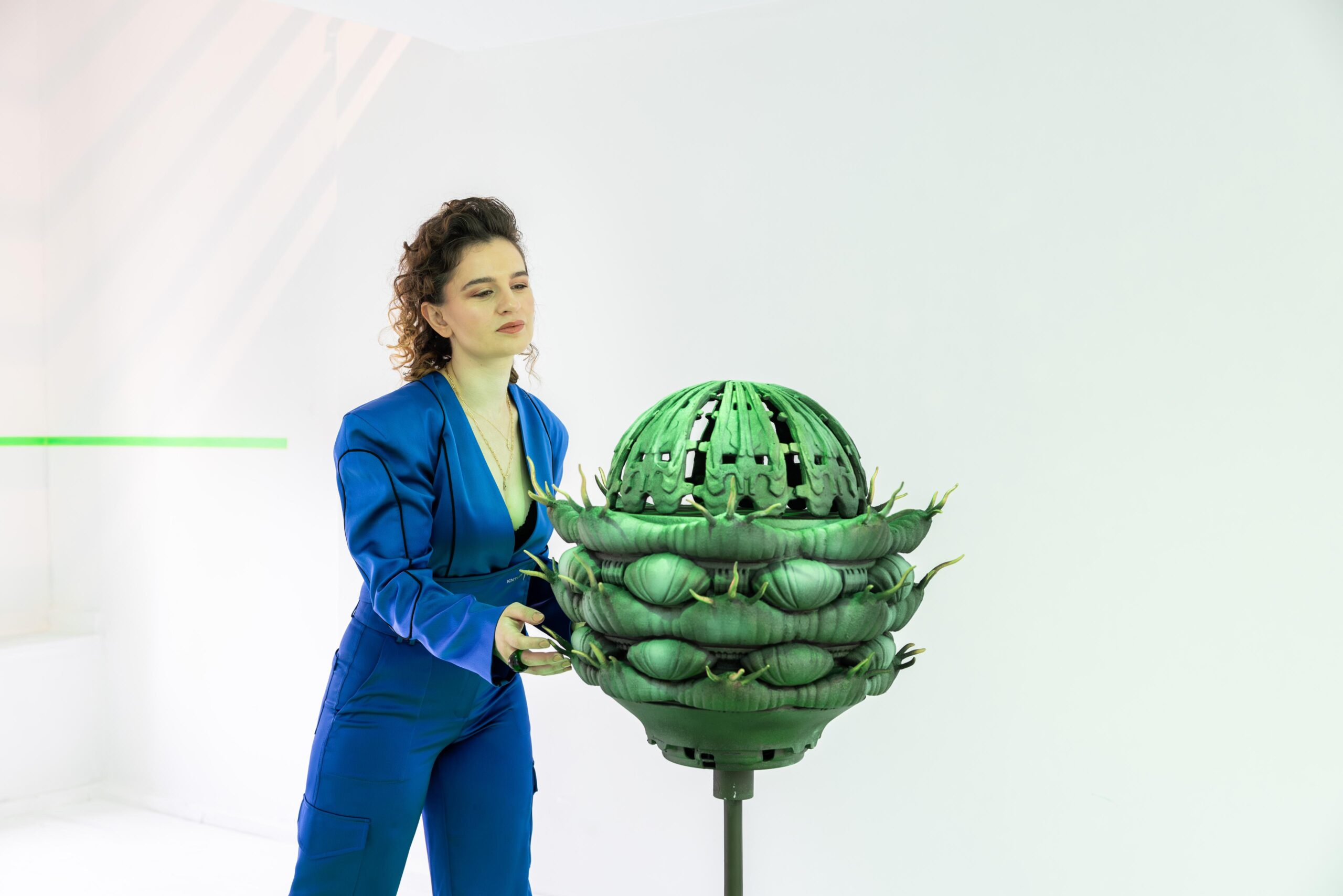Let us begin our conversation with a general introduction in the formal, aesthetic and conceptual matters of your work. It seems that in the current series, you stand at the threshold between painting, relief and sculpture. I am wondering how you came to this extraordinary state of your oeuvre. So, could you please describe shortly the general ideas regarding the form and concept of your work?
Although I didn’t even have the chance to experience any atmosphere where I could get into cultural contact as a child, as there was no parental guidance, I discovered my predisposition and excitement for plastic arts when I was very young, which I can understand when I think about it today. I believe that the turning point of my life began with this process.
Due to the limited opportunities, I started painting and sculpting with natural materials. I even made my first works on wet cement floors spilled on the floor. Of course, the incoming trowel disappeared with its traces. I will remember this with a smile on my face today… If we look at the subjects I have been working on recently, we will see that I have reconsidered the entire process of my life down to all its details. For this reason, we see that the relationship between form, color and material in my works emerges from my psychological reflections. The most important point that constitutes the thought practice of my art is my conflict and struggle with my own limits. The desire for a new life, free from these limits in the life that leads to death… My aim is to put all the cognitive and emotional effects of the time, place, geography and age I live in into a body, a work, with all the material possibilities I can access, through this main subject.
In my works, walls are an image of our personas that capture and mask our true selves. While life builds the lives of each of us with its own flow, somewhere deep within our being remains passive. Places where real desires, desires and passions, desires that we consider appropriate to ourselves or not, are imprisoned… It is no one other than us who imprisons this place behind the walls. All the bricks of these walls were laid by our hands. We bury our true selves between doorless walls and try to live a life as required by harmony. In my works, I create a door, a passage to this doorless room. I create an opportunity for the audience to exceed their own boundaries, break down their walls and meet their own reality. I invite you to this intellectually painful path by inflicting abstract destruction on its walls with the priceless pleasure and charm of aesthetics. Based on this starting point, this destruction in the physical condition of the works inevitably reflects on the viewers… My colors herald our new lives beyond the borders.
You refer in your answer to biographical and social issues, personas and biographies. Though, you are currently working in the field of abstract art. Normally one could expect from your answer a figurative approach. So, why do you chose abstraction for the expression of the matters you mentioned above?
I transform the materials I use in my works into a new form with light, shadow and color. There is a single color dominant on the back of this form I brought. I call this absolute reality. There is a form that is breaking away from this absolute reality and approaching us or trying to gain a place for itself.
These forms will vary, create different effects on each viewer, and will only open as many doors as their own feelings, thoughts, knowledge and aesthetic perception. Every time we pass through these doors, we will encounter a new door. The aim is to reach color and find a body in the harmony of color. I don’t know if this is possible. But I will continue to open and pass through these doors. Where I break the whispers, visions and dreams of my mind from captivity, I become free with abstract art and create a free space of existence. It is my greatest desire that those who watch this creation also experience it…
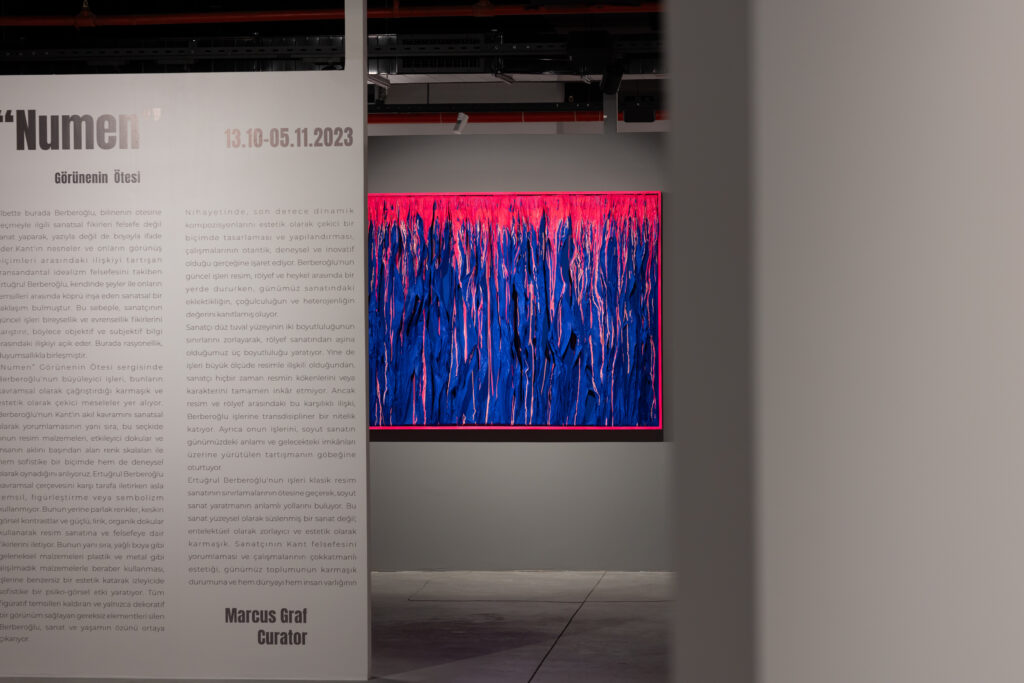
You mentioned that the structural being of your painting’s background has as a reference to Concrete Realty. Here, it becomes obvious that your work has strong relations to philosophy. I know that your current pieces are influenced by Immanuel Kant’s concept of Critique of pure reason. Could you please explain the relation of your work and Kant’s concept of reason and the understanding of our exterior world?
For me, trying to understand these analyses of Immanuel Kant is a very big task in itself, while trying to explain them verbally is much more arduous…While answering this question, I would like to start with the work “This Is Not a Pipe” (Ceci N’est Pas Une Pipe), one of the series of works called “The Betrayal of Images”, prepared by the Belgian artist Rene Magritte. The main idea that Magritte wants to examine and force the audience to think about in this painting is, the point is that a picture showing the image of a pipe, no matter how realistically drawn and colored, is not really a pipe. The image is only a representation of reality and not a reality, that is, it is not really a pipe that can be filled with tobacco, lit and smoked.
Based on this, it can be seen that I have taken this situation to another dimension in my work. Instead of making a realistic pipe painting, I place the pipe itself on the canvas. I experience a metamorphosis with the elements of art, aesthetics and philosophy. The goal is to understand or perceive absolute reality, that is, the color itself…
Therefore, everything I use in my work becomes the totality of objects that I use to reveal or direct absolute reality.
I can say that everything that makes it impossible to perceive the absolute reality of the objects in my works, that is, the color itself, is the integrity of images formed in our personas. Although these objects sometimes appear in harmony with color, they have a completely different reality than color alone. Objects have their own reality. Color also has its own reality. In order to perceive the color itself, we take the first step by first analyzing or trying to analyze the images created by our personas. In my own words, we have passed through the first gate.
Looking for the shortest distance between color and object shows my understanding of art and aesthetics.
In this process, I benefited from Kant’s analyzes in his work “Critique of Pure Reason” or the methods he used in his criticisms. Accepting that absolute reality (color) is imperceptible, I nevertheless evaluate the necessity of trying to reach it from an aesthetic point of view, and by searching for the shortest distance between two realities (color – object), I am trying to Decipher a new reality. What is this new reality? A person perceives the way things really exist, that is, after getting rid of the integrity of images formed in personas, he brings it to a pure state and after this state, and he shortens the distance between himself and the absolute reality, which is unknowable or imperceptible…
This effort to find the shortest distance has been the greatest concern of humankind since its existence. But it fell incomplete every time, succumbing to the power of images that multiplied every moment.
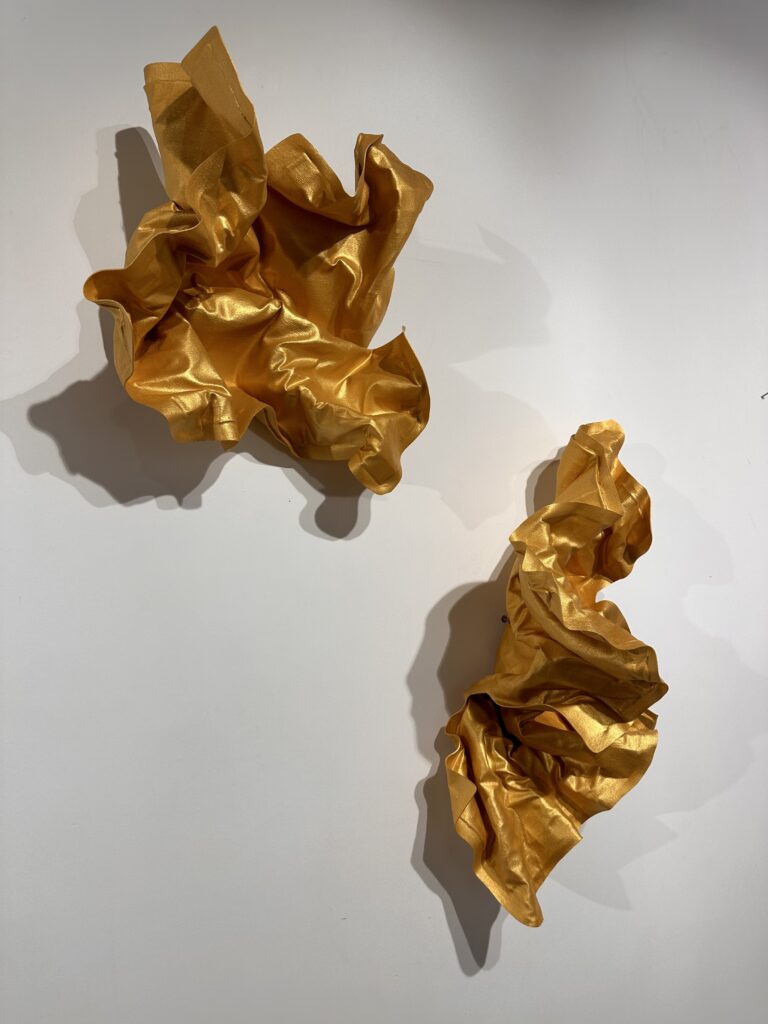
Does your focus on color is an attempt to get to the core of and the essence of painting?
I have thought a lot about this question and done a lot of work. Although I have read a lot of analyses, I have also written articles, but the fact that the unknown was only felt and could not be put into concepts never satisfied me with verbal sentences. For this reason, I have not written an answer to this question in some way for 3-4 days. Neither answer satisfied me.
While answering this question, I would like to tell you about a dream I had last night, that is, on September 23, 2023.
I was existing in the void of space, out of my control, very slowly and in a deep awe or feeling. There was no such thing as time and space. As if everything was as it should be. I noticed a color approaching me and with which we would soon become one. This color was approaching me as if dancing, flying in the wind, in the illusion of a large piece of fabric. It seemed like I had been waiting for this color for a long time. There was an unstoppable attraction between us. After a while, I experienced a collision or integration with color. Then, I took the form of color, the color took my form, and a new form appeared. I felt that color with everything in me, and I became that color. Likewise, I carried the consciousness that, that color also felt everything about me. This state of feeling can never be described in words.
When I woke up, I had the thought and feeling that this was literally what I was doing in my artworks.
Is there such a thing as essence? Probably this concept will always be discussed. Therefore, we cannot talk about the existence of the essence of art or know if it exists.
I asked myself “what is art for?” When I asked the question; I can answer, “It exists because it has to be.” In my opinion, all elements of art continue to expand in the micro and macro infinity of the universe, independently of humans. Therefore, we cannot bring the words art and essence together.
Micro and macro exist in infinity. Based on this idea, I feel that color, when I show presence in it, or the form that emerges as a result of a collision, comes to light in my work, or this form that I take reveals itself in my work.
When you look at a work, you feel something because when we are confronted with art, the ability to feel arises, that is, a sense of beauty, awe, or an indescribable supra-mental deep feeling, and then the respect for that feeling comes into play. It takes us on a journey between two eternities.
Finally, I would like to end this answer with a quote from Immanuel Kant.
“If a picture of an apple doesn’t make you want to eat it, it becomes a work of art…”
Besides the influence of Kant’s philosophy, what other sources of inspiration are important for you in the context of art, media and popular culture?
Starting from the philosophy of antiquity, looking at the philosophical movements of the 20th century from the window of the 21st century, looking at all the propositions from the era I am in, examining them and making their dialectics are highly reflected in my art. I believe that, creating a work and giving meaning to a work is possible by enriching one’s thinking methods. The thinkers whose ideas I am most impressed by are; Kant, Baruch Spinoza, Martin Heidegger, René Descartes, G. W. Leibniz, Gilles Deleuze and Jacques Derrida are the ones who opened a huge umbrella to today’s philosophy. In addition to philosophy, psychology, literature, cinema, theatre, poetry, photography, music, etc. I am interested in many fields. Considering that many of the people who made a difference in all these branches from past to present lived in different eras, thinking about the possibility of “if they had lived in the same era”, imagining possible disagreements in my mind, dreaming, looking at my works with them was the most nourishing mental experience I had in my workshop. It’s from my work. This is a great thinking space where I can pour out all the thoughts I know about them, first look at my works from the perspective of these thoughts, and then discover what is new and mine at the points where their ideas collide. It’s exciting and so nutritious at the same time…
Additionally, I evaluate my entire life in minute detail, from childhood to today. This is an ongoing process because I am changing and time is a tremendous player… I re-establish a relationship with all the objects I come across that have a place and a story in my memory, and I bring them to light with a new understanding of objects, using the appeal of aesthetics in my works. Nature is always a place of fascination and nourishment for me. It is very difficult to think that there is anything more extraordinary in creativity than the human mind and nature… There is everything about balance and aesthetics in nature. I feel the need to enliven and transform all the objects we come into contact with every day but fail to grasp or just look at and pass by. This need arises from my desire to seek or create new doors to life, to the universe, or to things we will never perceive.
The psychology, characters, thoughts, appearances, etc. of everyone who has been involved in my life and memories from childhood to today; many things are my areas of influence and nourishment. An artist must be involved in multifaceted areas of interaction and build nourishment areas for himself. He should keep his curiosity and excitement at the highest level and be fed by everything. Most importantly, one must experience this hunger.
I’m always wondering about what’s beyond visibility. This curiosity cannot lead me or any other artist to repeat themselves or another. It accelerates at every moment, leading to removing the border and opening passages to the universe like a black hole. Art should take people to the unknown because everything in life has happened and is condemned to repetition…
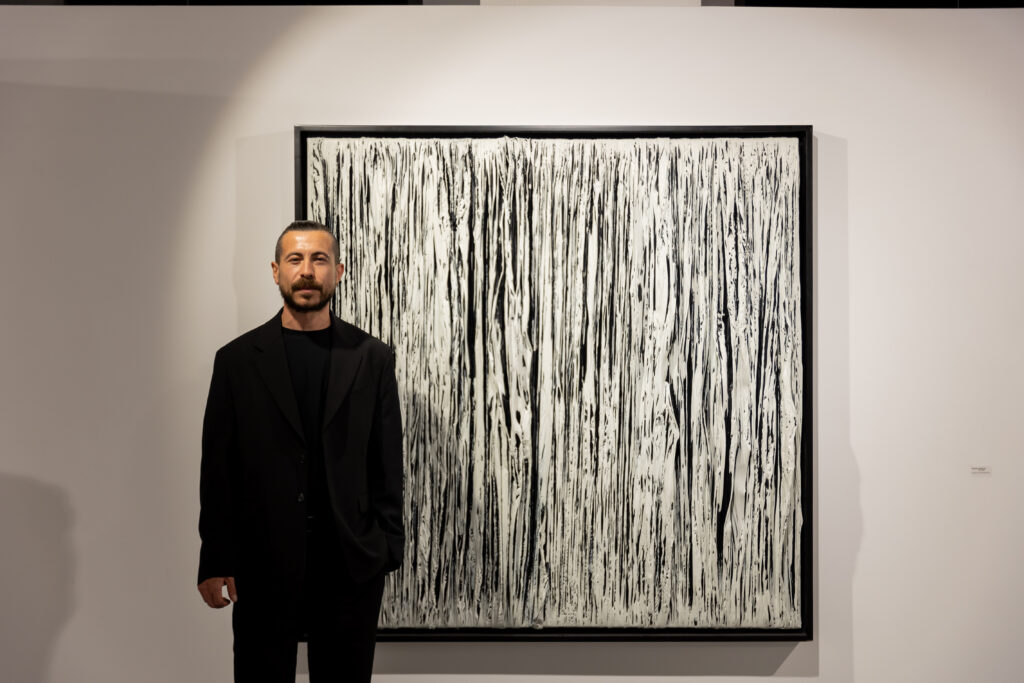
After having discussed the general outlines of your work, let us focus on your current exhibition at Eart. What is it conceptually about and how did you select the presented pieces?
We have been together with EArt Gallery for two years and now we have become a family. They showed great meticulousness in all the details of my personal exhibition for a long time. The exhibition took shape and reached its final form with the invaluable curatorial work of Mr. Marcus Graf. Therefore, I think that this exhibition, which emerged after these intensive studies, will reach the audience in the most effective way.
This satisfaction is very valuable for the exhibition artist and I am very excited to meet the audience with such an exhibition.
Numen exhibition will bring together the audience with five series of my recent works; Border (Sınır), Passage (Geçit), Fall (Düşüş), Winter (Kış) and Numen – Beyond the Visible series, from which the exhibition takes its name…
Numen – Beyond the Visible consists of the works that I targeted in my works from the other four series and brought to the final stop. That’s why we agreed on this name. Numen (the thing in itself) is a concept that Immanuel Kant added to the literature.
In a way, it talks about essence. This is my starting point in my artistic life. Is there such a thing as essence? We cannot know… We cannot sense or perceive. Therefore, we should view the existence of essence with suspicion. Despite this doubt, I set out to search for the essence with a sensation. I have been trying to bring this search to light in various series for a long time. I came to the last stop. At this stop I came across Immanuel Kant and it almost made me rewind. During this process, I oscillated between going crazy and enlightenment, and I’m still going back and forth. Essence has always been sought since the existence of human beings. If this search situation still continues, we are disturbed by something. It means we are still searching for Numen (Noumenon).
In contrast to the concept of Numen (Noumenon), which Kant uses to mean that it cannot be perceived by the senses, is outside the human ability to know, and cannot be subject to causality, it means that we are disturbed by the phenomenon that can be perceived by the senses and is subject to causality, or we want Numen for more.
I’m also looking for Numen. In this journey, I am trying to open the doors of the black holes that lead towards the essence in the flow of human life. Humanity tends to spend time with things consisting of sameness and repetition. Art takes a scalpel to this repetition and opens passages to endless diversity. These passages can only be encountered through a journey to the essence.
I am looking for the shortest distance between us and black holes, which are the metaphor of essence. This is my understanding of aesthetics and art. The selection in the exhibition is the expression of this journey.
While each series has a separate importance in itself, it seems that there is a connection between the series and that this is a journey consisting of stops. I invite the audience to think and feel these issues separately, to establish the connection between the issues, and to linger a little at the last stop.
Kant talks about our faculties (abilities) in a prominent section of the book. The first of these is our ability to know. Man is a knowing being. Latter; it is our ability to want, and desire. Thirdly; it is our ability to feel the sensations of pleasure and pain.
Therefore, there seems to be a distinction between essence and appearance. Only things appear to us. However, the essential, indivisible essence behind them is something completely different. When it comes to the faculty (ability) of knowing, the mind is concerned with what something is, insofar as it appears to us. It is not interested in anything beyond that, it is not related to the thing itself, it is not interested. All it wants is the appearance of the thing itself, which will satisfy it, and the point at which it remains satisfied. This manifestation is given in an ancient Greek expression; this is the phaenomenon, meaning the phenomenon. When we know, we are concerned with the phenomenon in the thing. The faculty of knowing is satisfied with the idea being in a relationship of harmony and conformity with the object, it is not related to the object itself, but the faculty of wanting and desiring are not the same thing. This time we want the object itself, not its information. As a subject, we make it an object for itself. So we’re curious about what’s beyond the obvious. So, what does “the object itself” mean? Numen means “the object itself”. If we want it, it means we have an idea of that object in our mind and we desire to obtain that object. This is the concept that Kant calls “thing in itself” or “thing in itself”.
Based on this notion, with the desire to be interested in and examine everything about humans and their essence, I made various analyzes and brought these analyzes to light with works as art objects.
My aim is to seek and find the shortest distance in a person’s journey towards his essence and to shed light towards that essence. It is to force this practice to take a big step by experiencing it through the objectivity of a work of art. With this acquired practice, it means reaching the audience’s own essence.
Now the ball is in the audience’s court…
The search for the essence of art is a crucial matter especially for abstract art.
You are working in the field of abstract art. Though, it seems that your quest for finding the essence of art goes hand in hand for the challenge to find the essence of life. In this sense, your work is not purely formalistic, right?! How would you describe this search for the essence? What results have you revealed so far? Please describe your essence of art first, and then if you wish the essence of life.
My works resemble me in everything. Sometimes I follow them and sometimes they follow me. I don’t know if this situation exists in every artist.
For example; my artwork is a silent observer, but they view everything they observe with suspicion. They look for what is beyond the visible and do not reflect any observation as it is because they have the desire to bring it to light. My works are mysterious, just like me. It derives its mystery from its color… They appear to be static, but they have an unstoppable movement beyond what is visible. They appear stationary due to the inaccessibility of the speed of this movement. They like to feed on opposites and exist with the awareness of these opposites. Sometimes they act intuitively and take form according to those intuitions. There are many similarities between my works and me that cannot fit into the pages. In short, my works carry the desire to search for the essence of everything, just like me… It is impossible for me to define the essence of art and life. With my works, I exist without the need to define our essence, and we have the desire to bring these entities to light…
Your work consists of strong colors and color contrasts. How do you decide on which color to use in a certain work?
Every thought, desire, knowledge, feeling, everything has a color and shades. These colors circulate differently in each artist. It should be so, because, like everything else, color combinations are endless… As I said; my works are very similar to me. There is a big difference between deciding on a color and living or desiring it. I experience color, I desire it, I dream it, I feel it and I bring it to light with my works.
Therefore, I can say that each work decides its own color.
Marcus Graf: Also texture is of great importance. How would you describe its meaning and role in your current works?
Ertuğrul Berberoğlu: The textures I use in my works sometimes serve color values. They even create depth with their presence to colors with the same values. Sometimes they take on the task of transporting you to another thought or feeling. For example; the metal wire I use in some of my works has a very hard and sharp texture. But the thought it takes on with color and form can become a form of expression of infinity, permeability and depth. Sometimes a toy car is placed on the canvas just to function as color and texture. I would not shy away from using plastic, concrete, wire, aluminum or anything else we see around as texture. Texture holds a very important place in my artworks. Texture is present even in the works I do with oil and acrylic paint. Each tissue serves a purpose in itself or exists on its own.
Marcus Graf: Finally, the latest works that you exhibit at Eart Gallery often stand at the threshold between flat painting, relief and sculpture. In a way, you have found a physical and concrete way of creating depth, a painterly issue that mattered for centuries. Could you please describe your concept of depth in your work.
Ertuğrul Berberoğlu: I do not include any limitations in my work. Art exists as long as it is free. While there are infinite forms of expression, I cannot be satisfied with the finite by limiting my art due to various concerns. Art is endless and so are its forms of expression. For that reason, I just produce, and each work produced builds its own existence within itself. Part of the exhibition also includes oil and acrylic paintings on canvas. In other words, I do not refrain from using everything in art as an object of production. As you mentioned, it is very possible that my works will wander on the threshold of painting, relief and sculpture…
This may lead the viewer to think that there is a search for the artist, but I call this creativity itself and I always fuel my desire to experience art in its entirety. When we look for a common point, we realize that the essence is hidden in color and tries to reveal itself in various ways. In other words, the essence of color gives the common understanding and perception of depth in my works…








